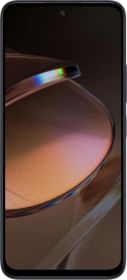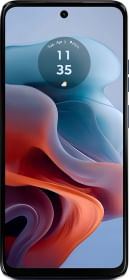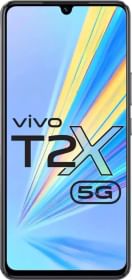Apple’s September event is over and we saw a handle of announcements happen from the stage. Apple launched the new iPhone 15, iPhone 15 Plus, iPhone 15 Pro, and iPhone 15 Pro Max. Apple also announced its A17 Pro chip, the powerhouse behind the much-anticipated iPhone 15 Pro and iPhone 15 Pro Max. This new SoC system promises to offer hardware-based ray tracing for mobile games – a leap that could redefine the gaming landscape and more.

Why Ray-Tracing is a big deal?
Ray tracing is a fancy way to make 3D pictures look very real by copying how light moves around in a virtual world. Until now, only really expensive gaming computers could do this in games. It enhances immersion and visual fidelity, creating breathtakingly lifelike visuals that push the boundaries of gaming. But making games do this is hard because it makes the computer work a lot.
Implementing real-time ray tracing is no small feat, as it places a substantial workload on the GPU. Only top-tier gaming PCs and laptops could previously handle this technology, with only a handful of games showcasing its full potential. Apple’s announcement, however, promises to change this dynamic.

CHECK: List of phones that support Ray Tracing
Apple’s Mobile Game-Changer
Apple’s foray into hardware-based ray tracing for mobile devices marks a historic turning point. While gaming smartphones have packed formidable hardware, ray tracing was long considered beyond their capabilities. Apple’s iPhone will be the pioneer in this arena, it could very well be the dawn of a new era in mobile gaming.
With a vast ecosystem of developers already leveraging Apple’s Metal API for graphics processing, integrating ray tracing into their games should be seamless. This advancement enables mobile games to achieve a level of detail and realism previously attainable only on the most powerful gaming PCs and consoles like the PS5.

Uncharted Territory
As the industry eagerly awaits the implementation of ray tracing in mobile gaming, questions linger about the quality and performance of these games. It’s yet to be seen how effectively developers can harness this technology. However, Apple’s venture into hardware-based ray tracing extends beyond mobile gaming, with implications for a wide range of products.
The Significance of Hardware Ray Tracing

To clarify, any processor can theoretically perform ray tracing, but the key lies in doing it swiftly and efficiently. Software ray tracing, which relies on traditional algorithms and CPU cycles for lighting calculations, is highly inefficient and can bog down the system.
Specialized GPUs have been the go-to solution, but their hardware is not optimized for these calculations. They also struggle to deliver a minimum of 30 frames per second (fps) for fluid gameplay. Brands like Nvidia, AMD, and Intel have introduced ray tracing-specific hardware in their GPUs, revolutionizing gaming experiences.

Apple’s inclusion of ray tracing-capable hardware in the A17 Pro chip signals its commitment to advancing its gaming capabilities. This move holds significant implications for products beyond just the iPhone 15 Pro.
Expect Ray tracing support in Apple M3 silicon
Apple’s ray tracing journey doesn’t stop with the A17 Pro chip. The upcoming Apple M3 chip, slated for release next year, is expected to incorporate ray tracing-capable GPU technology. This development promises to breathe new life into Mac gaming and the creative workloads that Apple is renowned for.
Nvidia had previously dominated the creative market with ray tracing-capable GPUs, but Apple’s offerings could win back a substantial share with M3 Pro, M3 Max, and M3 Ultra variants. Ray tracing, coupled with MetalFX Upscaling, provides an appealing alternative to the traditional Intel-AMD-Nvidia trifecta that developers have grappled with.
Although the PC gaming market predominantly favors Windows, Apple’s hardware and ray-tracing capabilities could sway more developers toward its platform. Apple’s robust technical foundation and developer-friendly environment make it a compelling contender.
Apple’s entry into the ray tracing arena heralds a new era of mobile gaming and creative possibilities. While challenges lie ahead, Apple’s hardware prowess and developer support make it a formidable player in the gaming industry. As the tech giant continues to innovate, the future of ray tracing on Apple devices seems brighter than ever. Stay tuned for the dazzling transformations that lie ahead.
You can follow Smartprix on Twitter, Facebook, Instagram, and Google News. Visit smartprix.com for the most recent news, reviews, and tech guides.





























